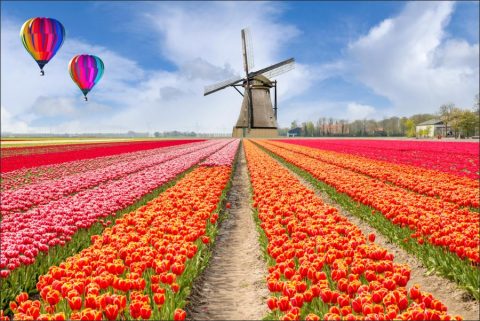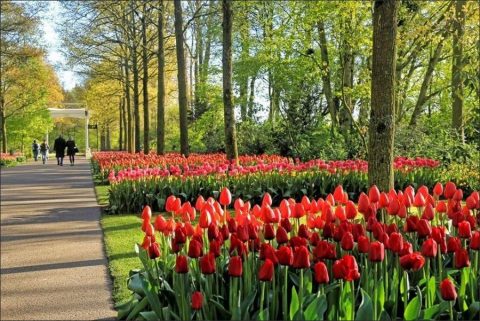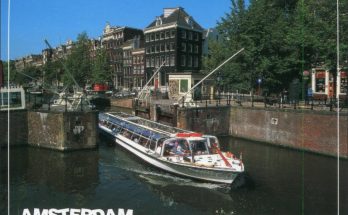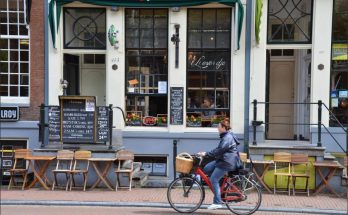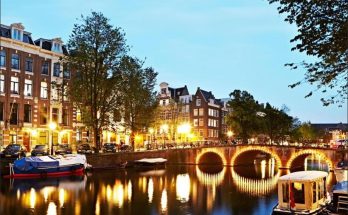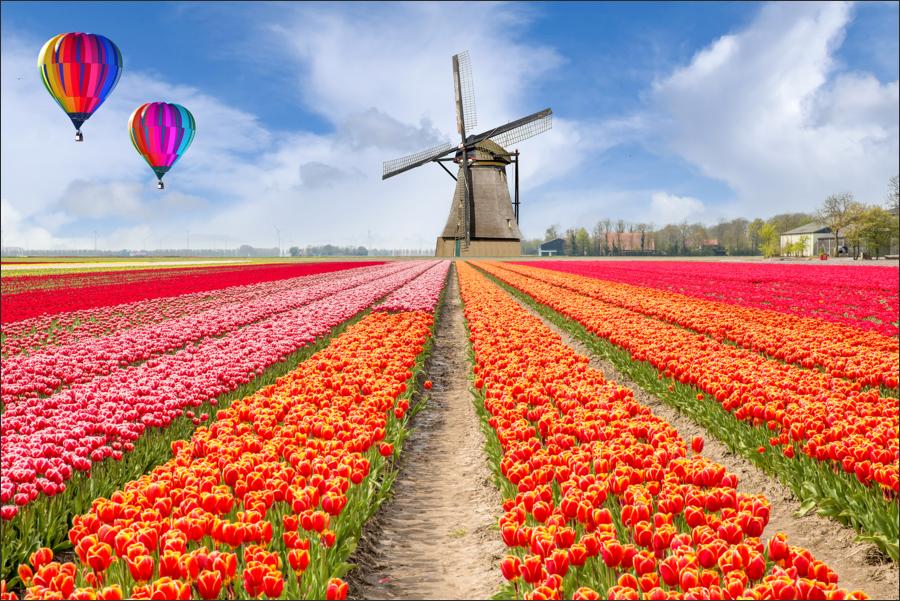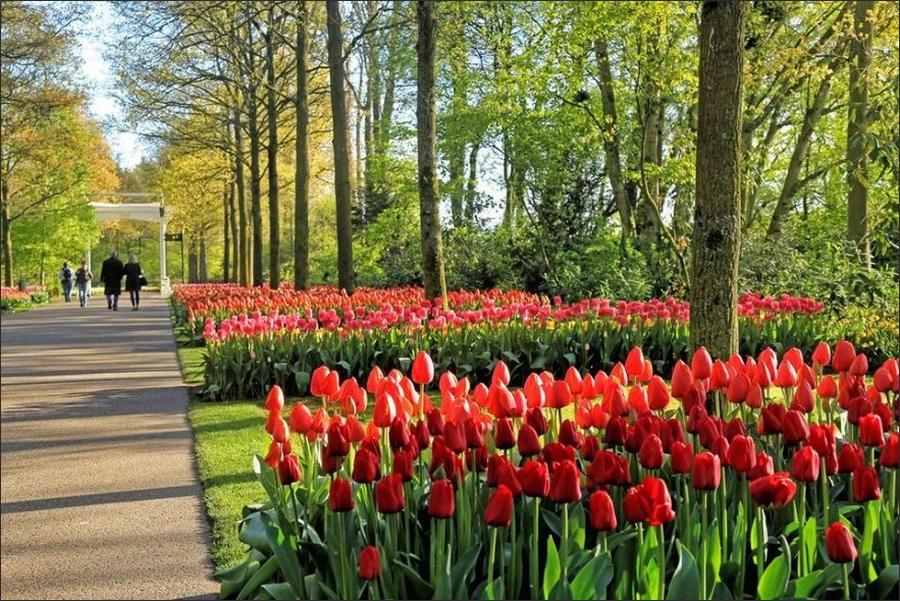The first thing you notice on arriving in Amsterdam in Spring is that the sun is shining just a couple of hours from dreich Glasgow.
The trip would be worth it for the escape to tulip- growing weather alone. But Amsterdam is much more.
It has all the advantages of a big city – culture, history, food, entertainment, good transport – but it is physically small, beautiful, relatively quiet and, largely thanks to the canals, almost free of cars.
That’s not to say you don’t run road risks in walking about.
The amazing and cheap tram service isn’t the problem – you can hear them a mile away.
And there are so few cars negotiating the narrow streets and bridges that they aren’t a problem.
No, what traffic hazards there are come from the “silent death” … cyclists. There are no hills in Amsterdam and EVERYONE uses bikes, especially newly- arrived tourists.
And they are the ones who sneak up and give you a heart-attack with their last-minute warnings to get out of the way as they wobble past.
But that’s a minor problem for a city which is, probably, the safest in Europe – both in terms of traffic and street crime.
Despite the often-quoted Dutch laxity on soft drugs and sex, there are few muggings or assaults, mainly because Amsterdam is a late city – many shops don’t open until 10 in the morning, and bars and cafs stay open until one or two in the morning.
So there are always busy streets, even in the wee small hours.
Amsterdam is built as a half wheel. In the middle you have the Old Centre, bounded by the canal called the Singel. It contains the notorious red- light district around the Oude Kerk, the Nes theatre street, a quaint maze of small streets and quiet canals and the Royal Palace at the Dam, with pedestrian shopping streets going north and south.
Surrounding the Old Centre, you have the three concentric ring canals, Herengracht, Keizersgracht and Prinsengracht. The Herengracht is the grandest but the Prinsengracht is the friendliest and has all the houseboats.
To the west of the ring canals, is the Jordaan, a lovely area to walk, with quiet canals, tiny streets and unusual shops. You’ll find a lot of the best restaurants and most interesting bars there, too.
There are more than 1000 restaurants to choose from in Amsterdam, in particular around the Leidseplein.
It is advisable to reserve; there are a few restaurants that don’t take reservations, or where you won’t need to, but it is better to be safe than sorry.
Enquire beforehand if you want to pay with a credit card. Peculiarly, Amsterdam lags behind the world in taking plastic but this improves every year.
If you are a non-smoker, you are in BIG trouble finding a smoke- free zone. The Dutch are heavy smokers and I have yet to find a restaurant or bar which actually has a no-smoking policy. You get the distinct impression the normally placid Dutch would riot if this happened.
When the Dutch go out to eat, they don’t go to eat Dutch food. Consequently, there are very few places that serve Dutch cuisine. Pancakes are a typical Dutch fare, and tasty and filling. The Pancake Bakery, on Prinsengracht 191, has a good atmosphere and delicious pancakes.
There is little distinction between a caf and a bar. Both sell alcoholic and non-alcoholic drinks, food and coffee.
But be careful – the policy of tolerating soft drugs is centred around so-called coffeeshops. Whether you wish to avoid or patronise them, they are easy to recognise – dark, with a characteristic smell and words like “free, high, happy” and “space” in their name.
Once you’ve eaten, had a drink and a wander about, you’ll want to visit some of the sights, like The Anne Frank House on Prinsengracht, war-time hiding place of the young Jewish girl and her family.
There are also three major museums, the Rijksmuseum, the Stedelijk (modern art) and the Van Gogh, situated around the Museumplein.
The Rijk contains some of the Netherlands’ great art, including the classic Rembrandt painting The Nightwatch. The Dutch take delight in telling you how there were more people in it until some years after it had been painted. It wouldn’t fit a new location – so they lopped three figures off one end!
But, if you get no other daud of culture in Amsterdam, head for the Van Gogh Museum and get the full impact of Vincent’s genius.
By now you will be completely knackered walking round museums and will want to put your feet up.
Damrak, by Central Station, and Rokin, by the Spui, are where you can take one of the canal boat tours to see Amsterdam from the water. It is almost certainly the most relaxing, stress-free 90 minutes you will enjoy.
If you want excitement, there is an immense choice of activities. Pop and rock music lovers should check out the multi-media Melkweg and Paradiso, both near the Leidseplein, and discos Roxy, at the Munt, and Mazzo, on the Rozengracht, near Westerkerk.
For jazz, try the Bimhuis, in the Old Centre, or get classical with an opera in the Muziektheater, at Waterlooplein, or the famous Concertgebouw.
Whatever you do in Amsterdam, one thing is certain. You won’t want to come home.
The Dutch currency is the guilder and exchange rate is three guilders to the Pound.
Typical weather ranges from around freezing in the depths of winter to typically pleasant sunny days of 20-25C in the summer. Spring and autumn are pleasant, but can be wet.
Just about everyone speaks English in Amsterdam.
The best way to travel is by tram. You can buy a ticket from the driver, the conductor or a machine, depending on the sort of tram it is. However, it is cheaper if you buy a “strippenkaart” from a tobacconist, post office or railway station beforehand. You stamp the strips yourself in the yellow machines in the tram – each journey uses one strip plus a strip for every zone you travel in.
